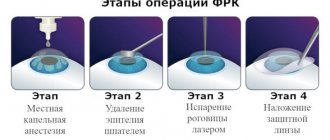How do you communicate with employees? Do you powerfully control every step, let everything take its course, practice an individual approach? So how does it work? Today we will talk about leadership styles. Make yourself comfortable, let's begin!
Or maybe you haven’t thought about leadership style at all? Business is going well, the online store is developing, why complicate things? Let's look at the main management styles and the pros and cons of each. This will help you understand the strengths and weaknesses of your leadership and determine what style to pursue in the future.
Authoritarian style, or “As I said, so it will be”
Gennady Pavlovich P. has been leading the team for many years. Just as he became a manager back in Soviet times, he still manages. It is clear that after so many years his style has already been formed and is not subject to change. But it should be: Gennady Pavlovich is one of those bosses who firmly believes in the instructions from the joke: “Point 1. The boss is always right. Point 2. If the boss is wrong, see point 1.” Yes, yes, there are still such things. It is not surprising that there is a turnover in his team : young people come, brought up in a new society, who are not afraid to offer their ideas and are very surprised when they come across the boss’s principles. They are surprised and leave - to more loyal managers. Only the main core remains in the team - people who have been working for decades and have long been accustomed to Gennady Pavlovich’s quirks. And everything would be fine, only this backbone is almost entirely pensioners. Modern methods of promotion are alien to them - the company has no development, everything is going on the old fashioned way. The company is not doing well.
Do you know such Gennadiev Pavlovichs? They are also found among the younger generation of entrepreneurs. As a rule, they are very authoritarian, harsh in their judgments, and recognize only their own opinions . They do not allow the slightest deviation from instructions, regulations, charters and the established order of the company. They carefully observe subordination - they do not take liberties with the common people, this is not a lordly matter. Here's the paradox: they don't trust their own employees, but at the same time they want work tasks to be completed flawlessly.
Disadvantages of an authoritarian style
- You can throw out the baby with the bathwater: those who are accustomed to not listening to the opinions of online store employees risk not hearing valuable ideas that will bring profit to the company . Anyone who does not allow informal relationships with subordinates may not notice the love of his life or someone who could become his best friend. Human relationships sometimes go beyond the chain of command.
- Stubbornness is not yet persistence. Fanatical adherence to instructions, a step to the left - a step to the right equals execution - a disastrous position for the company . Read the biographies of great entrepreneurs: they all admit that you need to deviate from the rules, think more broadly, and allow creativity.
- Not everyone agrees to work with a dictator - in companies where an authoritarian management style reigns, the percentage of dismissals is higher. And, as a rule, the most talented ones leave. The ones who survive in such a team are opportunists or conservatives who don’t care.
- Employees in such companies do not develop, do not offer ideas, and do not learn new things. Maybe they would be happy - but why, because it will still be as the local god ordered. And since initiative is punishable, why show it at all?
Pros of an authoritarian style
- Iron discipline. You can't indulge a dictator: either you fulfill all his demands, or the door to the street is open. As a rule, in such a team fines for the slightest violation bloom in full bloom. Total submission makes employees obedient and agreeable to any demand from management.
- Clarity and transparency of all business processes. The dictator boss knows exactly how and what is happening in the company at every stage, what tasks are being solved and who is performing them.
- In a crisis or stressful situation, employees will not be confused, but will strictly follow the orders of their superiors - they are no strangers to this. With a democratic or liberal leadership style, this is more difficult to achieve: in the event of force majeure, both management and employees can be stormy like a ship in bad weather. And this is fraught with hasty and erroneous decisions.
The Importance of Leadership Style
The fact is that not a single manager in the world has all of the above qualities. But the point is different: every manager makes certain mistakes, here are the main ones:
- the management style is incorrectly chosen;
- incorrect positioning as a leader;
- inattention to the psychological characteristics of workers.
In fact, the other two follow from the first problem. Types of leadership power are divided into three well-known types: authoritarian, democratic and liberal. If a manager makes the wrong choice in favor of one of them, then the following consequences are inevitable:
- Incorrect distribution of responsibilities.
- The manager considers his employees to be insufficiently experienced and performs most of the work independently, which does not give him the opportunity to control the process from the outside.
- The manager overloads the staff with tasks, as a result of which the employees do poor quality work in order to meet deadlines.
- Subjective attitude towards employees. Unfortunately, this fact cannot be disputed. Each manager treats an employee based on a personal system of likes and dislikes, which in some situations can have a negative impact.
Management styles are determined by the personal qualities of the manager. Types of leadership behavior will be discussed below.
Democratic style, or “Let's think together”
Alexey K., a young manager, left Gennady Pavlovich’s company and founded his own business. He decided to learn from the mistakes of others and realized that he would not allow such a dictatorship as reigned at his previous place of work. Alexey recruited young employees who were more like-minded than his subordinates. From the first days, he began to adhere to a democratic leadership style: he discussed the company’s development strategy with employees, listened to their ideas and opinions, and trusted them to work on projects independently. For the workers, he was not a strict boss, but his friend Lekha. One day this almost ruined the company: the employees relaxed and stopped taking Alexey seriously. Some people began to be late, miss the deadlines for completing tasks, and to the bewilderment of the boss they said: “Whatever, I’ll do it, don’t worry!” When deals with profitable clients began to fall through and the company lost profits, the young businessman realized that it was time to change something.
Democratic management style is a deceptive thing. To the young and modern, it seems to be the only acceptable one and in keeping with the spirit of the times (well, don’t work the old fashioned way!), but if you loosen the reins a little, it will turn out like in the example above. To prevent democracy from turning into anarchy and permissiveness, the leader must have management experience.
In general, the democratic style is truly a priority in young modern companies. The manager does not make decisions alone - he consults with the team, organizes brainstorming sessions, and tries to ensure that each employee reveals his or her potential. He himself works as an equal or assigns himself the role of a consultant or mentor. If a democratic boss makes a mistake, he does not blame the staff for everything, but draws conclusions. At the same time, he remains the leader - he does not remove himself from the main role, does not emphasize that “we are all equal here, guys.” That is, a team is a team, but the hierarchy must be clearly built.
Disadvantages of the democratic style
- The possibility of anarchy, belittling the role of the leader, and the emergence of opposition in the team. In general, everything that was described using the example of Alexey K.
- Decisions can take a long time to make. The more people involved in the discussion, the longer the process may take. Time management and clear deadlines for setting tasks will save the day. For example, 3 days are given for discussion and introduction of improvement proposals - and not a second longer. This disciplines employees and speeds up business processes.
Pros of a democratic style
If mistakes are avoided, a democratic style can become the basis for creating a cohesive team.
- Strengthens team spirit, makes employees true like-minded people, united by one goal. It’s good if the company has a well-developed corporate culture - mission and values, main tasks for the coming years, a common Big Idea.
- Reduces the number of errors in work. The more people involved in solving a problem, the greater the chance that the optimal option will be found. Just remember that the discussion should not drag on.
- Minimal staff turnover. Why leave the team if you share its values and objectives, and feel involved in one common goal? That's right, there's no need. Employees rarely leave companies with a democratic management style (if, of course, they join the team and share common values).
Personality-oriented style, or “Don’t be afraid, I’m with you”
Olga B. worked with both Gennady Pavlovich and Alexey. The woman realized that both authoritarian and democratic styles have their pros and cons, and decided to act differently. Actually, she didn’t come up with anything new - she used a completely individual approach. Olga realized that you need to work with each employee in your own way, and what is suitable for one is categorically unacceptable for another. For example, a quiet person may be shy at general planning meetings and brainstorming sessions, but during a personal conversation he will begin to burst out with creative ideas. It is difficult for an owl man to arrive at the office at 9 am - his head is not clear, things are not getting done, but in the evening the most fruitful time comes. Olga organized a free schedule for several of her comrades and allowed introverts not to speak at the planning meeting in front of everyone. The employees appreciated the good attitude and began calling the boss “our mommy.” But there’s nowhere without a fly in the ointment: a group of people quickly emerged who considered a good attitude a weakness and began to openly neglect work. Olga was worried, had soul-saving conversations, and only when the team submitted a collective request for the dismissal of those at fault, she decided to take a bold step.
Practicing an individual approach is the right thing to do. Typically, bosses of this type (usually women) like to conduct psychological testing, organize corporate parties and get-togethers in order to get to know their employees better. However, you shouldn’t overprotect your employees: you are not a mother hen, and they are not helpless chickens. Trust, but verify, be not a mommy, but a boss - this is the moral of this fable.
Disadvantages of a person-centered approach
- As a rule, bosses of this type are soft, sensitive people. Good relationships are more important to them than the company’s profit and its development. Therefore, sad as it may be, a soft-spoken boss can quickly be “eaten up” by his more resourceful colleagues or one of his subordinates.
- No delegation of authority. Instead of clearly issuing instructions and monitoring the process of completing tasks, such managers either do everything themselves or forgive endless delays. Wake up guys, this is a business! Here you need to make tough decisions and take big risks, otherwise you risk going broke and going bankrupt.
Advantages of an individual approach
- Good relationships in the team. Human relations are perhaps the most important thing for half of the employees. If you are lucky enough to find an understanding boss, many will hold on to this position with their hands and teeth, even despite the low salary and small career prospects.
- In a crisis situation, employees will stand behind the boss and will not allow the company to collapse . “One for all, and all for one” - this slogan still works.
The leader and the features of his work. Functions of managers.
A manager is a person who directs and coordinates the activities of performers, who must obey him and, within the limits defined by their authority, fulfill all his requirements. The manager himself can take on the functions of a performer only in order to understand the specifics of the problem.
Today, the main task of a manager is to carry out organizational work, which is a special type of creative activity.
It is believed that a modern manager in a management system performs the following main functions:
— strategic, which consists of setting the organization’s goals and leading the planning process. Under normal conditions, it is considered the main one;
— expert-innovative. The manager directs the development and implementation of new types of products and services, creates conditions for the necessary organizational changes, advises subordinates;
— administrative, combining a number of subfunctions: control (evaluation of performance results), organizational (distribution of powers and tasks among performers), directing (coordination of the direct work of people), personnel (recruitment, orientation, development of personnel), stimulating (convincing performers, rewarding successful work, punishment for wrongdoing);
— communication — holding meetings, receiving visitors, answering letters and phone calls, conducting negotiations, business representation;
- social - the leader creates a favorable moral and psychological climate, supports traditions and norms of behavior, and helps subordinates.
In all organizations, except the smallest, three levels of managers can be distinguished (they differ from each other in the set and proportion of basic functions, the range and form of contacts, the scope of rights and responsibilities):
1. Senior managers (senior managers). These include members of the board of directors, presidents, vice presidents and some other categories of managers. Their work is large-scale and requires a lot of experience.
2. Middle managers (main divisions and enterprises included in this organization) are appointed and dismissed by the first person or his deputies. They are responsible for the fulfillment of assigned tasks and the safety of the property of the units entrusted to them.
3. Lower-level managers manage mainly technological processes and performers (workers and other non-managerial employees) and bear full responsibility for their actions. They solve small-scale and frequently changing tasks, distribute tasks, draw up work schedules, organize and coordinate the work of performers, ensure conditions for them to fulfill production tasks efficiently and on time, control the rational use of equipment, material and other resources, production discipline, technology safety, promote innovation, etc.
So how should it be done?
We found our own flaws in each of the three styles. So what management style should you choose and how to behave with subordinates? Much, of course, depends on your personality and character type. A dictator by nature will never “deliver snot” and care about the personality of each employee. But a quiet, intelligent woman is simply not capable of slamming her fist on the table and forcing her subordinates to work.
What to do? Combine management styles depending on the situation. This is called situational management. For example, if force majeure occurs, you need to turn on the dictator mode and give clear instructions that can save the situation. If you see that an employee is not coping with his job, use an individual approach, talk to the person personally, find out what worries him. If you need to solve a new problem, stick to a democratic style, find out the opinions of all employees and solve the problem together. Moreover, even when interacting with the same person, it is possible to use different management styles, again depending on the situation. Somewhere to be a tough leader, somewhere to be a wise mentor, sometimes to provide the necessary fatherly support. Here's a chart to help you skillfully navigate between multiple management styles.
Of course, to do this you need to be an experienced leader and a fairly flexible person. All this comes with time. Good luck to you, may everything work out!
Democratic
This leadership style is based on the participation of subordinates in decision making with the division of responsibility between them. The name of this type of work for a senior manager comes to us from the Latin language. In it, demos means “power of the people.” The democratic management style of a leader is considered the best today. Based on the research data, it is 1.5-2 times more effective than all other methods of communication between a boss and his subordinates.
If a manager uses a democratic management style, then he relies on the initiative of the team. At the same time, there is equal and active participation of all employees in the processes of discussing the company’s goals.
In a democratic leadership style, there is interaction between the leader and subordinates. At the same time, a feeling of mutual understanding and trust arises in the team. However, it is worth noting that the desire of a senior manager to listen to the opinions of company employees on certain issues does not occur because he himself does not understand anything. The manager's democratic management style indicates that such a boss is aware that new ideas arise during the discussion of problems. They will certainly speed up the process of achieving the goal and improve the quality of work.
If, of all the styles and methods of management, a leader has chosen a democratic one, this means that he will not impose his will on his subordinates. How will he act in this case? Such a leader will prefer to use incentive and persuasion methods. He will resort to sanctions only when all other methods have been completely exhausted.
The democratic management style of a leader is the most favorable from the point of view of psychological impact
Such a boss takes a sincere interest in employees and provides them with friendly attention, taking into account their needs. Such relationships have a positive effect on the results of the team’s work, on the activity and initiative of specialists
People become satisfied with their own work. They are also satisfied with their position in the team. Cohesion among employees and favorable psychological conditions have a positive impact on the physical and moral health of people.
Of course, management styles and leadership qualities are closely related concepts. Thus, given the democratic nature of communication with subordinates, the boss must enjoy high authority among employees. He also needs to have excellent organizational, intellectual and psychological-communicative abilities. Otherwise, the implementation of this style will become ineffective. The democratic type of leadership has two varieties. Let's take a closer look at them.










